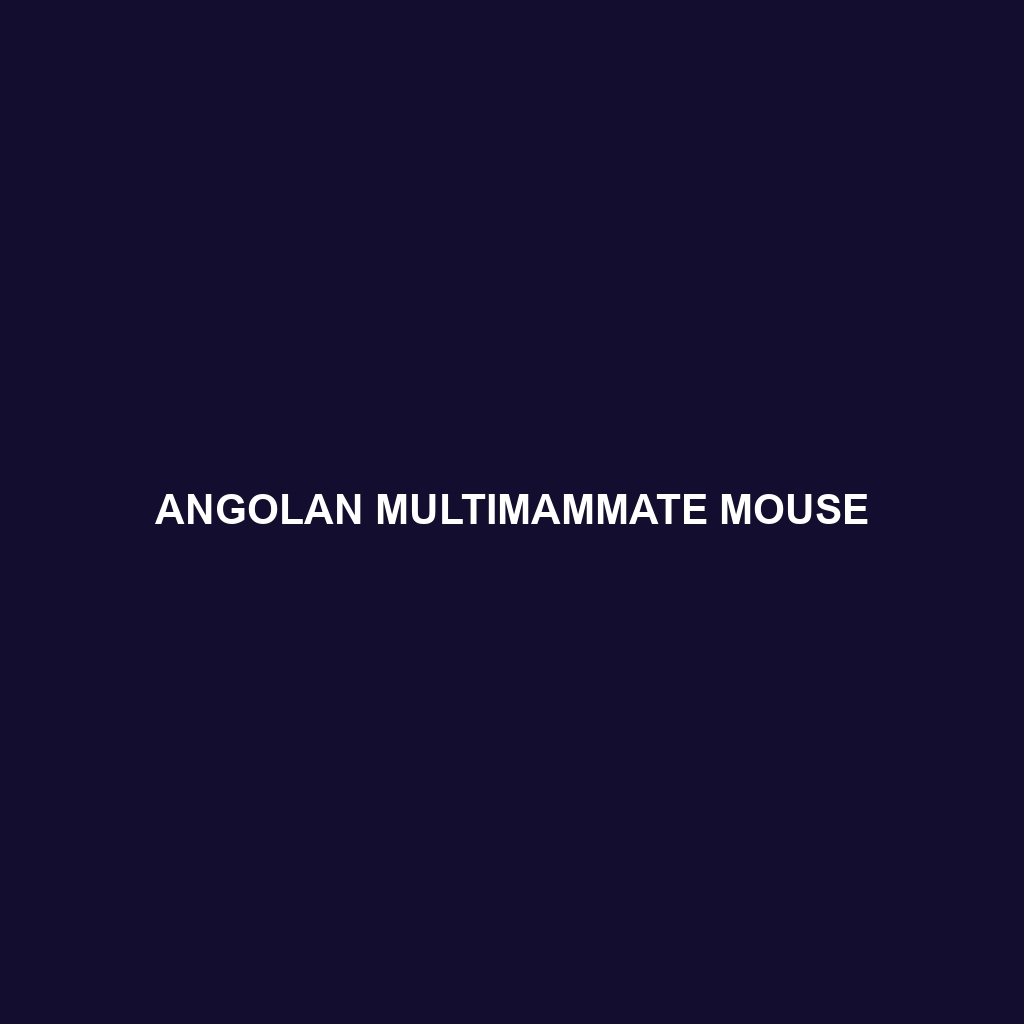Angolan Multimammate Mouse
Common Name: Angolan Multimammate Mouse
Scientific Name: Mus certo
Habitat
The Angolan Multimammate Mouse is primarily found in the southern region of Africa, specifically in Angola, Zambia, and parts of Namibia. This rodent thrives in a variety of habitats, including savannas, grasslands, and forest edges. It prefers areas with plenty of ground cover such as dense grass and low shrubs, providing ample shelter and foraging opportunities.
Physical Characteristics
The Angolan Multimammate Mouse is a medium-sized rodent, typically measuring about 9 to 12 centimeters in body length, with an additional tail length of approximately 7 to 10 centimeters. Its fur is generally light brown to gray with a paler underside, helping it blend seamlessly into its natural surroundings. A distinctive feature of this species is its multiple pairs of mammary glands, a characteristic that aids in suckling larger litters, often comprising 4 to 10 pups.
Behavior
This species exhibits a range of fascinating behaviors, particularly in its social structure. The Angolan Multimammate Mouse is known for its gregarious nature, often living in small groups. Its nocturnal habits make it an active forager at night, searching for food under cover of darkness. Additionally, these mice are known to burrow extensively, creating complex tunnel systems for nesting and food storage.
Diet
The diet of the Angolan Multimammate Mouse primarily consists of seeds, grains, and various plant materials. They are opportunistic feeders, often scavenging and adapting their diet based on food availability. This includes insects and other small invertebrates, especially during periods of drought when plant matter is scarce. Their foraging habits play a crucial role in seed dispersal within their ecosystems.
Reproduction
Breeding usually occurs year-round, but there is a peak during the rainy season when food is abundant. The female Angolan Multimammate Mouse can give birth to up to three litters per year, with each litter containing an average of 5 to 6 pups. After a gestation period of about 20 to 25 days, the young are weaned after about 3 weeks and become independent shortly thereafter.
Conservation Status
The Angolan Multimammate Mouse is currently classified as ‘Least Concern’ by the International Union for Conservation of Nature (IUCN). However, habitat loss and environmental changes pose potential threats to its population. Continued monitoring is essential to ensure its conservation in the face of such challenges.
Interesting Facts
One interesting fact about the Angolan Multimammate Mouse is its remarkable ability to reproduce rapidly under favorable conditions. Additionally, the multi-mammary structure not only assists in nurturing the young but also allows the species to survive in varying environmental conditions by ensuring that larger numbers of offspring can be raised simultaneously.
Role in Ecosystem
The Angolan Multimammate Mouse plays a significant role in its ecosystem, serving as both prey and competitor. It is a food source for various predators, including birds of prey, snakes, and small mammals. Moreover, by foraging for seeds and other plant materials, the Angolan Multimammate Mouse contributes to plant diversity and health within its habitat, showcasing its importance in maintaining the ecological balance.
